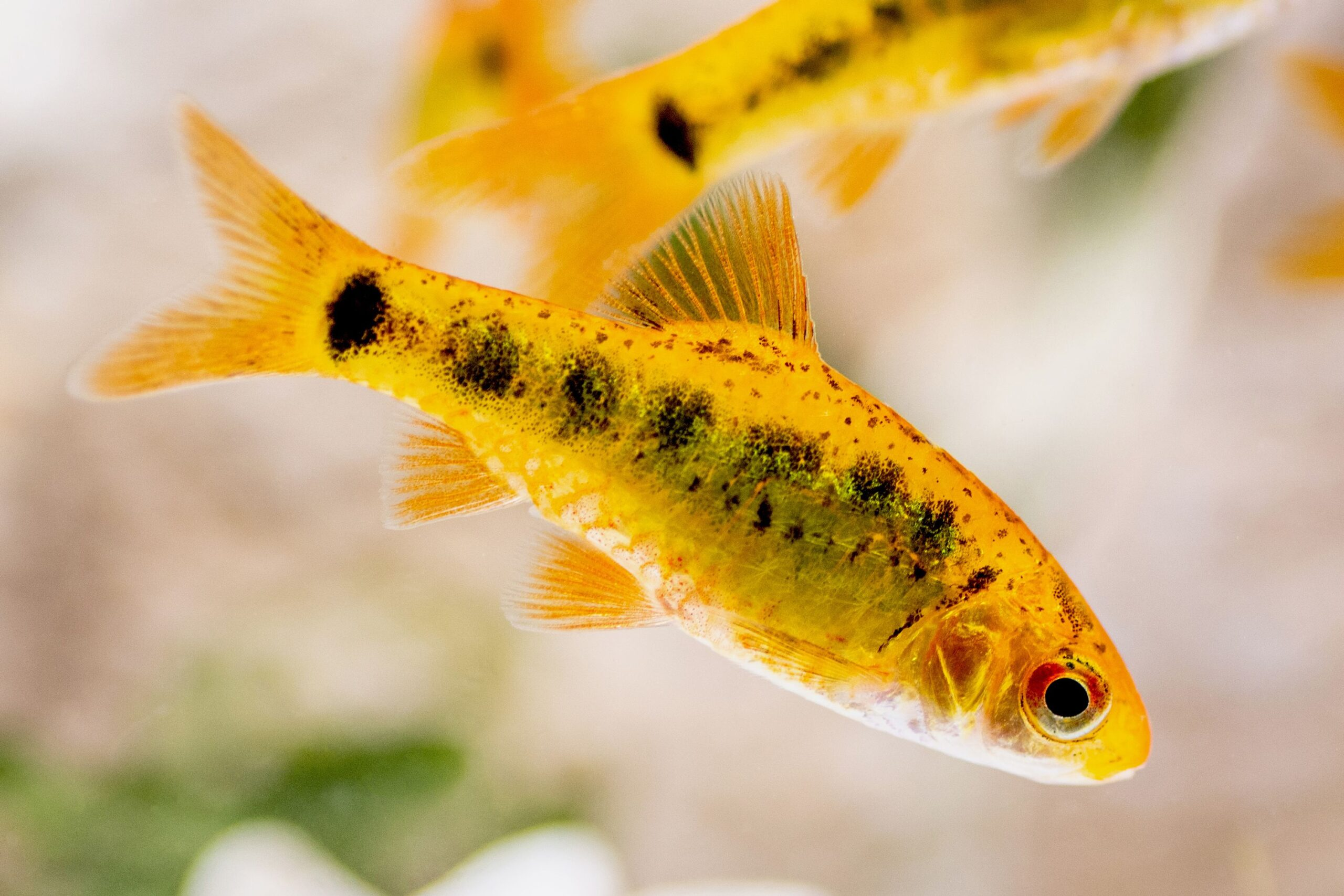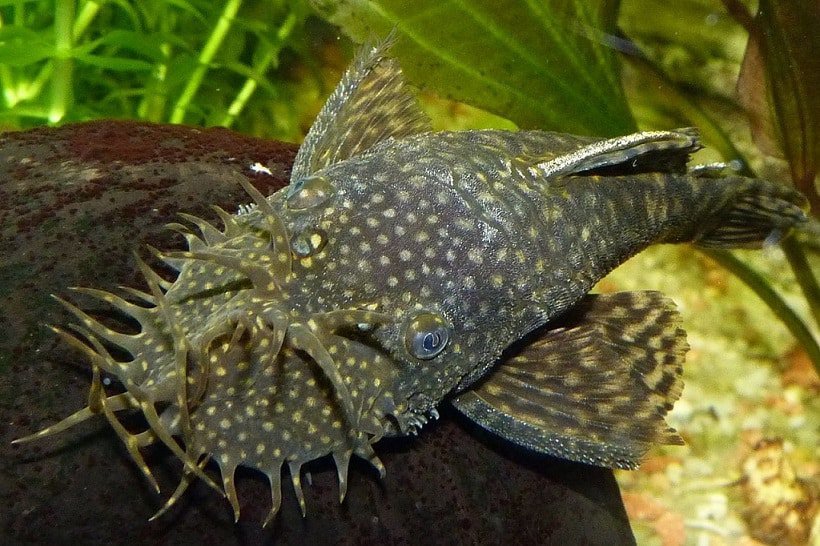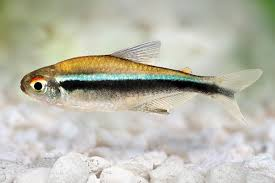Video of Actual Fish
The Buenos Aires tetra derives its name from the capital city of Argentina. The city sits on the western shore of the Río de la Plata, located along the southeastern coastline of South America. Considered a river by some and a gulf by others, the Río de la Plata is formed by the joining of the Paraná and Uruguay Rivers, both of which are home to the Buenos Aires tetra. In the wild, they are additionally found in rivers, ponds, lakes, and streams. They are freshwater fish and do not do well in highly salty or polluted waters.
Colors and Markings
The Buenos Aires tetra is one of the larger tetras as it can grow to nearly three inches in size. Its body is silvery with a narrow blue line that starts behind the gill and ends at the caudal (tail) fin, where there is a black diamond-shaped spot. The fins are orange-red and a splash of red can be seen at the top of the eye. Several color variations have been bred including one that has a yellow tail; there is also an albino variety.
Tankmates
Buenos Aires tetras are social fish that swim in schools. Although this species of tetra is generally peaceful, avoid keeping Buenos Aires tetras with smaller fish such as the neon tetra. Also, avoid housing them with long-finned fish such as the betta and angelfish. Buenos Aires tetras will nip at the fins of long-finned tankmates.
The Buenos Aires tetra does well with larger sized tetras, such as the black widow or serpae tetra, as well as with barbs, danios, gouramis, and rainbowfish. Bottom-dwelling fish are also good companions. A school of Buenos Aires tetras are also good dither fish among non-aggressive cichlids; they help relax cichlids enough to come out of hiding.
Buenos Aires Tetra Habitat and Care
The undemanding Buenos Aires tetra is adaptable to a range of aquarium conditions. Acceptable water temperatures can span all the way from the mid-60s to 80 degrees Fahrenheit, making it suitable for heated as well as unheated tanks. It is a highly active fish, and it does require a sizable open swimming space. Longer tanks are ideal.
The Buenos Aires tetra is not suitable for most live planted tanks, however, as it is known to devour vegetation. Use artificial plants instead, or select sturdy live plants such as anubias, Java fern, or vallisneria. Round out the décor with driftwood and rocks around the periphery of the tank, and your Buenos Aires tetras will be quite at home.
They are happy with any type of substrate and do fine with normal aquarium lighting. However, the tank should be securely covered as these fish are skilled jumpers and will probably do so if given the opportunity.
The Buenos Aires tetra is extra sensitive to the nitrates and phosphates that build up over time, and water hardness increases due to evaporation. To combat these ever-changing conditions, water should be replaced on a regular basis. At least 25 to 50 percent of the tank water should be replaced every other week especially if the tank is densely stocked.
Buenos Aires Tetra Diet and Feeding
Buenos Aires tetras are omnivores that will accept a wide variety of foods. Feed these tetras several times a day but feed only what they can consume in three minutes or less at each feeding.
In the wild, they primarily feed on worms, crustaceans, insects, and plants, but in the aquarium, they will generally eat all kinds of live, fresh, and flake foods. Given its propensity for eating live plants, provide this fish with some lettuce, spinach, or other vegetation to munch on. In lieu of fresh vegetation, you can provide a good quality spirulina flake food.
Flake, dried, and freeze-dried foods add well-needed variety to their diet and will be readily accepted. To keep these tetras at their best and most colorful, offer live foods such as bloodworms, daphnia, brine shrimp, and mosquito larvae.




Reviews
There are no reviews yet.